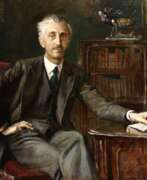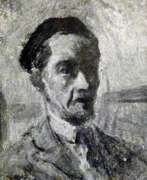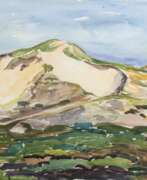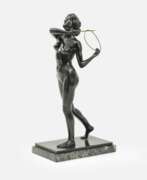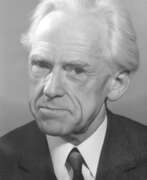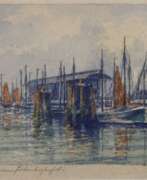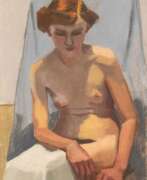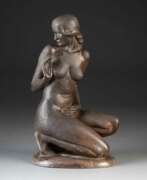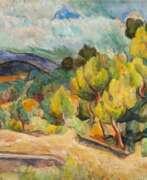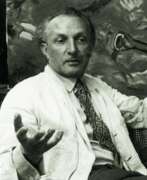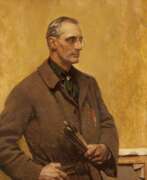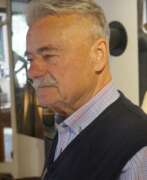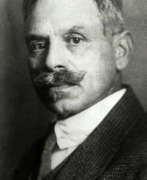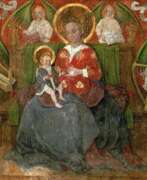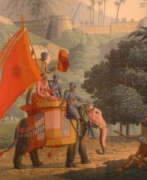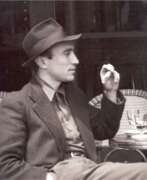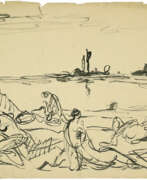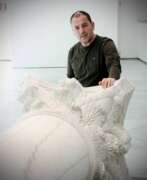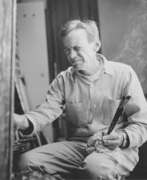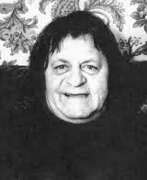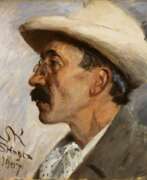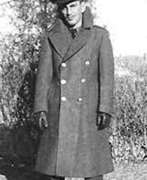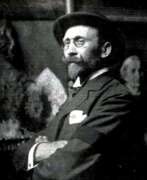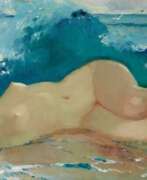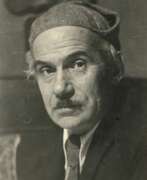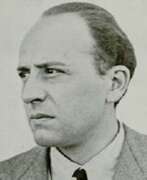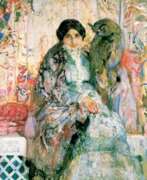Nude art Realism
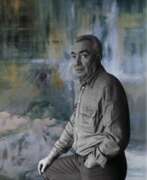

Giuseppe Ajmone was an Italian painter and printmaker.
He studied painting at the Brera Academy of Fine Arts in Milan and in 1946 was one of the signatories of the Realist Manifesto, also known as "Oltre Guernica.
Ajmone painted both landscapes and still lifes as well as semi-abstract figures.
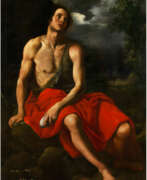

Cristofano Allori was an Italian painter of the late Florentine Mannerist school, painting mostly portraits and religious subjects. Allori received his first lessons in painting from his father, Alessandro Allori, but becoming dissatisfied with the hard anatomical drawing and cold coloring of the latter, he entered the studio of Gregorio Pagani. When still young he became a court portraitist for the Medicis, though many of his commissions were replicas of portraits by his predecessor Bronzino, or had participation by others.[citation needed. His pictures are distinguished by their close adherence to nature and the delicacy and technical perfection of their execution. His most famous work, in his own day and now, is Judith with the Head of Holofernes.
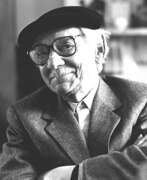

Manuel Álvarez Bravo was an Mexican visionary photographer whose work vividly illustrates the cultural heritage of Latin America. His unique perspective on life and superb photographic skills have inspired generations of photographers around the world.
Alvarez Bravo was known for his experiments with light and shadows, composition and form. His surreal photographs were often full of mystery and enigma, while also reflecting the difficulties and contradictions of Mexican society in the first half of the 20th century.
Alvarez Bravo's work marvellously combined aesthetic beauty with profound social context. His work is not only inspiring in its beauty but also a reminder of the importance of preserving peoples' cultural heritage and history.
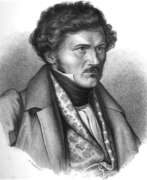

Samuel Amsler is a Swiss engraver. He studied his art under Johan Heinrich Lips and Karl Ernst Hess, at Munich, and from 1816 pursued it in Italy, and chiefly at Rome, till in 1829 he succeeded his former master Hess as professor of engraving in the Munich academy. The works he designed and engraved are remarkable for the grace of the figures, and for the wonderful skill with which he retains and expresses the characteristics of the original paintings and statues. He was a passionate admirer of Raphael, and had great success in reproducing his works.
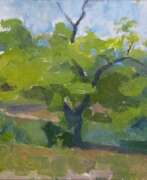

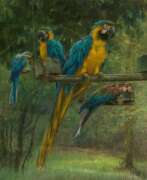

Berthe Constance Ursule Art was a Belgian still life painter. She was trained by Alfred Stevens and advised by Franz Binjé. Berthe Art exhibited her work at the Palace of Fine Arts and The Woman's Building at the 1893 World's Columbian Exposition in Chicago, Illinois. She became a member of the Brussels-based club called Cercle des Femmes Peintres which was active 1888–1893. They were the Belgian equivalent of the French Union des Femmes Peintres et Sculpteurs. She began a Brussels gallery in 1911 together with some friends from the (by then defunct) Circle of Women Painters. The gallery was called the Galerie Lyceum.
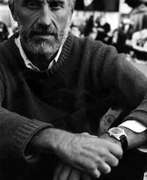

Ugo Attardi was an Italian painter, sculptor and writer. Attardi moved from Genoa to Rome in the early 1950s, where he formed the group Forma 1 together with other artists. His sculpture of Ulysses is now permanently installed in Battery Park in New York
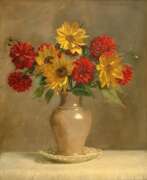

Theodor Bonenberger is a German painter and cavalry officer. He studied with Jacob Grunenwald and Karl von Geberlin at the Stuttgart Art School, then from April 30, 1887 - at the Royal Academy of Arts in Munich with Johann Kaspar Herterich and Carl von Marr. Has been on study trips to Italy, France, Spain and the UK. After completing his studies, he settled in Munich as a freelance artist. Bonenberger also held the rank of major in the cavalry in reserve. From 1895 he took part in many exhibitions in Munich, Düsseldorf and Vienna. In 1936, he completed a portrait of Adolf Hitler, which he presented to Eva Braun for her birthday. He dealt with flower, genre, portrait, landscape and nude painting.
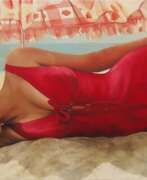





Alfred Jean Andre Cluysenaar was a Belgian Portrait painter. Jean Alfred was a member of the Cluysenaar family, an artistic family from Brussels. He became the father of the painter André Cluysenaar. He studied in the Académie Royale des Beaux-Arts of Brussels in the atelier of Joseph Jaquet and François-Joseph Navez. He painted some important decorations in the Royal Zoo of Antwerp and in 1861-1876 he ornated the Aula in Ghent. Cluysenaar was famous for his monumental decorations of high quality. Awarded in the expositions of Brussels, Ghent, Paris Vienna and London. Some of his paintings are kept in the Royal Museum of Fine Arts Antwerp.
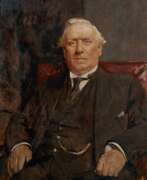

André Edmond Alfred Cluysenaar was a Belgian painter. He was especially known for portraits and female figures. He was member of the Cluysenaar family, descendant from a long line of architects who originated in Aachen. He received his first art lessons from his father, then studied with François-Joseph Navez. Initially, he worked as a sculptor, but devoted himself entirely to painting after 1902. He was firmly grounded in the romantic style at first; producing still lifes and genre scenes, but later turned to impressionism and painted mostly female figures, often semi-nude. He also executed monumental ceiling paintings for the City Hall in Saint-Gilles. During World War I, he lived in London where he established a reputation painting portraits of notable people, including the Royal Family, which were done in a more commercial style using Alfred Stevens as a model. Most of these portraits may be seen in the National Gallery.


Herman Courtens was a Belgian painter. Herman Courtens was son of Franz Courtens who became his first teacher. He was also a student of Isidore Verheyden at the Academy of Fine Arts in Brussels. He became a teacher at the Higher Institute of Fine Arts in Antwerp. This was the perfection after the ordinary Academy studies. Herman Courtens painted figures, genre scenes, portraits, landscapes, flowers and interiors. His works often have a somewhat busy, overloaded image.


Eduard Adolf Daelen is a German artist, writer, and journalist.
He studied at the Düsseldorf Academy of Art and the Munich Academy of Fine Arts. Daelen was a member of the Malkasten Society of Artists (Malkasten) and was chairman of the local association Allgemeine Deutsche Kunstgenossenschaft. During World War I he took up drawing patriotic posters and war postcards.
Daelen also became known for the first biography of Wilhelm Busch, which he wrote in 1886. He also wrote art history articles that were published under pseudonyms in various newspapers.


Gustave Franciscus De Smet was a Belgian painter. Together with Constant Permeke and Frits Van den Berghe, he was one of the founders of Flemish Expressionism. In 1908, he and his wife followed Léon to the artists' colony in Sint-Martens-Latem. There, they initially came under the influence of Luminism and the painter Emile Claus, who lived in nearby Astene. At the beginning of World War I, he and his family joined his friend, Van den Berghe, and fled to the Netherlands. From 1914 to 1922, they moved about, visiting and staying at the art colonies in Amsterdam, Laren and Blaricum.[2] His meeting with the Expressionist painter Henri Le Fauconnier marked a turning point in his style which, up until then, owed much to Cubism. In 1927, he settled in Deurle. It was there that his mixture of Expressionism and Cubism peaked, with a series of works depicting circus, fairground and village scenes. After his death in Deurle at the age of sixty-six, his house was preserved as a local museum.


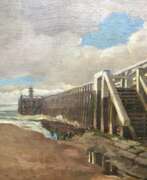

José Dierickx, known as Joseph Dierickx, was a Belgian painter. Joseph Dierickx is a painter of historical scenes, genre scenes, also a landscape and portrait painter. He also produced many murals. His realistic works executed from nature are luminous and his subjects well arranged in space. In 1892, he was co-founder of the Brussels artistic circle Pour l'Art. He teaches at the Saint-Michel college and at the school of decorative arts in Ixelles. His work was part of the painting event in the art competition at the 1928 Summer Olympics.
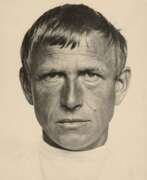

Wilhelm Heinrich Otto Dix was a German artist whose work stands as a stark, unyielding reflection of the societal tumult and trauma of the early 20th century. Born in 1891 in Untermhaus, Germany, Dix's early life was steeped in the arts, his ambition to become an artist nurtured by both familial influence and formal education in Dresden. His experiences as a soldier in World War I deeply influenced his artistic direction, leading him to vividly depict the horrors of war and the decay of the Weimar Republic with a brutal realism that became his signature style.
Dix's association with the Dada movement and the New Objectivity (Neue Sachlichkeit) further honed his critical, often cynical portrayal of post-war society. His works, such as "The Trench" and "War Cripples," expose the visceral aftermath of conflict, while his engagement with the Dadaists imbued his art with a disruptive, confrontational energy against societal norms and the art establishment.
Perhaps most notable is Dix's ability to capture the psychological depth and societal critiques through his portraits and landscapes, which ranged from the grotesque to the surreal. Paintings like "Portrait of the Journalist Sylvia von Harden" and the triptychs "Metropolis" and "War" are emblematic of his keen observation and stark depiction of the era's social and political unrest.
Despite facing significant adversity, including being labeled a degenerate artist by the Nazi regime and facing professional and personal setbacks, Dix's legacy as a painter and printmaker endures. His works are not only historical documents but also profound reflections on humanity, war, and society, resonating with collectors and art experts alike.
For enthusiasts of culture, art, and history, Dix's oeuvre offers an unflinching look into the human condition under the strain of societal and political upheaval. His contributions to painting and printmaking continue to be celebrated in museums and galleries worldwide, underscoring the enduring relevance of his work.
For those interested in exploring the profound depth and historical significance of Otto Dix's work, signing up for updates on new product sales and auction events related to his art can provide invaluable insights. This subscription is a gateway to staying informed about opportunities to engage with the tangible pieces of Dix's enduring legacy.


Leopold Durm was a German doctor and painter. He belonged to the artist association Scholle. He owned a house on Seeholzstrasse in the Holzhausen artist colony. In his early works, Durm was influenced by the natural lyricism of the clod, but in later years he developed his style towards the monumental. His later works were created during lulls in the fighting before Arras and Verdun.


Thomas Cowperthwait Eakins was a pivotal figure in American realism, celebrated for his profound and uncompromising portrayal of the human figure. Born on July 25, 1844, in Philadelphia, Pennsylvania, Eakins dedicated his life to depicting authentic human experiences and emotions through painting, sculpture, and photography.
Eakins' education in art began at the Pennsylvania Academy of the Fine Arts and extended to studying abroad in Europe, where he was influenced by French realists and the anatomical precision in their work. His approach combined rigorous study of the human form with a realistic portrayal of American life, making significant contributions to both art and educational practices in the United States.
His notable works include "The Gross Clinic" and "Max Schmitt in a Single Scull," which showcase his mastery in combining technical skill with emotional depth. These pieces not only depict scenes from everyday life but also incorporate a level of detail that reveals Eakins' deep respect for the individuality and inner life of his subjects. Despite facing criticism during his lifetime, particularly for his unflinching realism and subjects considered controversial at the time, Eakins was posthumously recognized as one of America's foremost painters.
For those interested in learning more about Thomas Cowperthwait Eakins' life, works, and his impact on American art, visiting collections that feature his work, such as the Metropolitan Museum of Art and the Pennsylvania Academy of the Fine Arts, can offer deeper insights.
To stay updated on exhibitions, new findings, and auction events related to the remarkable works of Thomas Cowperthwait Eakins, consider signing up for our newsletter. Gain exclusive insights and early notifications tailored for collectors and art enthusiasts. This is an excellent opportunity to deepen your appreciation and knowledge of one of America's greatest realist artists. Subscribe today to ensure you don't miss out on these valuable updates!
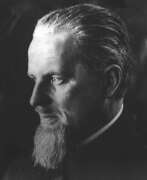

Ivan Semyonovich Efimov (Russian: Иван Семёнович Ефимов) was a Russian and Soviet artist of the first half of the twentieth century. He is known as an animal painter, graphic artist, sculptor, illustrator and reformer of the puppet theater.
Ivan Efimov worked in different genres and techniques, but all his work, including decorative and applied art, was focused on animalistic themes. He created works for the Moscow subway, train stations, sanatoriums and many other places and became famous for his technique of through volume relief in sculpture. The master also illustrated more than 20 books.
Efimov also created erotic works - about a thousand sheets with various thematic series, but the public learned about them only after the collapse of the USSR.


Heinrich Faltermeier was a German sculptor. After an apprenticeship as a goldsmith and years of travel, including to Spain, Faltermeier studied from 1936 to 1943 at the Academy of Fine Arts in Munich. He worked in accordance with the Nazi concept of art and created war memorials. From 1938 to 1944, with the exception of 1941, he was represented at all major German art exhibitions. Faltermeier's preferred working materials as a sculptor were bronze, marble and wood.


Max Feldbauer was a German painter, associated with the Munich Secession. He is primarily known for rural, Bavarian scenes. From 1901 to 1915, he taught at the Academy of the Münchner Künstlerinnenverein (women artists' association). In 1908, he joined the Munich Secession. He also ran his own painting school, in Mitterndorf, near the Dachau art colony, from 1912 to 1922. He left the Secession in 1913; becoming one of the founders of the New Secession, and served as a board member. In addition to all of these activities, he provided illustrations for Die Jugend (Youth), a weekly arts magazine.


Maria Paula Figueiroa Rego was a Portuguese-British visual artist known particularly for her paintings and prints based on storybooks. Rego's style evolved from abstract towards representational, and she favoured pastels over oils for much of her career. Her work often reflects feminism, coloured by folk-themes from her native Portugal.
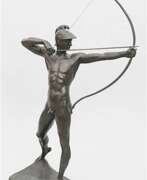

Ernst Moritz Geyger was a German artist known for his work in sculpture, painting and engraving. His work is included in the collections of the Los Angeles County Museum of Art, the Carnegie Museum of Art and the Fine Arts Museums of San Francisco.
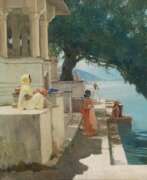



Grigory Efimovich Glukman (Glikman) was a Russian-American graphic artist.
In the 1930s Grigory Glukman was mainly engaged in easel painting. At that time, his main subjects were scenes from Parisian street life, landscapes, portraits, and nudes. In 1941 he emigrated to the USA.
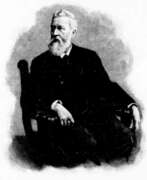

Gustav Graef was a German painter of the second half of the 19th century. He is known as a painter who specialized in historical and portrait painting.
Graef was commissioned early in his career to create murals for the New Museum in Berlin. One of his famous works was the giant monumental canvas "Charlemagne Adopts Vidukind". The artist also created scenes from the tales of Hercules and Theseus for the Old Museum in Berlin. Then in his genre paintings he moved from mythology to modern history. The master later concentrated on portrait painting, creating idealized female portraits that brought him commercial success. In 1880, at the height of his fame, Graef became a member of the Prussian Academy of Arts.
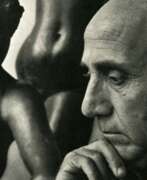

Emilio Greco was an Italian realist sculptor, draftsman, writer and poet.
At the age of 13, Greco was apprenticed to a mason and later studied at the Academy of Fine Arts in Palermo. His first solo exhibition took place in 1946. Emilio Greco created monumental figurative works in bronze and marble, park sculptures, primarily nude female figures and portraits. His sculptures are characterized by refined, elongated forms in the tradition of Italian mannerism. Notable among them is the monument to the character Pinocchio (Pinocchio and the Fairy) for the town of Collodi.
Greco also designed one of the bronze doors of the cathedral in Orvieto and the monument to Pope John XXIII in St. Peter's Basilica. In 1974, a Greco Garden dedicated to his works was opened at the Open Air Museum in Hakone, Japan.
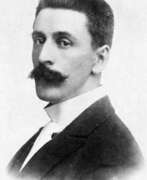

Lindsay Bernard Hall was an English-born Australian artist, teacher and art gallery director. He studied painting at the South Kensington School of Art, Antwerp and Munich, and worked for several years in London. He exhibited at the Royal Academy and was one of the original members of the New English Art Club. In 1891 he was appointed director of the National Gallery of Victoria and master of the School of Arts in Melbourne. Hall's paintings were usually interiors, nudes, or paintings of still life.


Lambertus Johannes Hansen was a 19th-century Dutch painter. His main subject was the painting of inner houses, with doorways and incident lights. He is known for historical interiors in the manner of Pieter de Hooch. Both at the Royal Academy of Art in Amsterdam, as well as at the Society Felix Meritis, he won several prizes. In 1832 he won a silver medal for his painting after a nude model. In 1833 he became a fellow member of the Amsterdam Academy and also a teacher at that institution.




Gus Heinze is an American photorealist painter. During the 1950s and 1960s he worked as a freelance commercial artist on Madison Avenue. In 1970 he began his career as a photorealist painter in Bondville, Vermont; many of his paintings from this period depict parts of automobiles and motorcycles in close-up. In 1978 Heinze began exploring more diverse subjects. He increasingly moved toward storefront-window and city scenes, in a style that he calls "abstract realism," where the subject is real but the point of view and composition give the painting an abstract quality. In addition to his urban subjects, Heinze has also painted dilapidated farm equipment such as tractors and water pumps, and old trains and locomotive engines. He has also done series of paintings depicting rocky cliffsides, vineyard grapes, and streams; much of his subject matter is characterized by complex reflections off glass or water, intricate foliage, and deep background blacks with saturated colors in the foreground.


Gussy Erika Edith Hippold-Ahnert, née Ahnert, was a German painter and master student of Otto Dix. The early work of the Dix student, such as the painting Lying Nude from 1931, shows her closeness to Dix's New Objectivity or Verism. She reached her artistic peak in 1932/1933, when she developed a painting style of her own, unmistakable character in the glazing technique taught by Dix. Hippold-Ahnert's late work is closely connected to the works of her husband Erhard Hippold and other artists of this region and time.
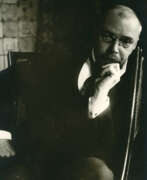

Paul Hoecker was a German painter of the Munich School and founding member of the Munich Secession. In 1874, he became a student at the Academy of Fine Arts Munich, which he attended until the spring of 1879. His most influential instructor was Wilhelm von Diez, who led him away from genre painting to a more impressionistic style. In 1891, at the young age of 36, he was appointed to the Munich Academy. He was one of the first "modern" teachers there, exposing his students to impressionism and the latest developments from the Barbizon School. In 1892 Hoecker became one of the founding members of the Munich Secession, acting as its secretary. The Secession ultimately inspired similar movements in Berlin and other cities.
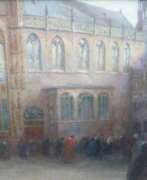

Jozef Horenbant was a Belgian painter. Horenbant was a student at the Academy of Ghent. He became a teacher in 1886 and director of the Academy in Sint-Niklaas in 1900. He held the directorship until 1933. He was also director of the Drawing School in Ledeberg. Horenbant painted atmospheric, intimate genre scenes, interiors (especially of churches) and landscapes. He was co-founder of the Koninklijke Wase Kunstkring, a member of Als ik Kan and founder-curator of the Museum of Sint-Niklaas. He donated part of his oeuvre to the Museum of Fine Arts in Ghent, as well as his collection of old engravings and old sculptures. From 1911 to 1918 he was president of the Cercle Artistique et Littéraire in Ghent.


Carl Horn was a German artist of the first half of the 20th century. He is known as a painter and graphic artist who specialized in nudes, landscapes and portraits.
Horn created many exlibris in the Art Nouveau style early in his career. He painted city and seascapes, genre scenes and portraits using watercolor and oil. His work was characterized by lyrical realism and a sensitive, harmonious and richly colored palette. Horn was also the director of the Nordic Academy of Art in Bremen.


Serge Ivanoff was a French portrait painter of Russian origin. He created book illustrations, posters and advertisements.
Serge Ivanoff executed portraits of many famous personalities, including Pope Pius XI, Serge Lifar, Yvette Chauvire, Arthur Honegger, Edwige Feuer, Grand Duke Vladimir Kirillovich Romanov, Alexandre Benois, Olga Boznanskaya, Zinaida Serebryakova, Vyacheslav Ivanov, Paul Valéry, Jacques Fath, Eleanor Roosevelt, and Jefferson Caffrey.
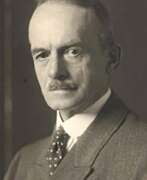

Angelo Jank was a German animal painter, illustrator and member of the Munich Secession. He was the son of the German painter Christian Jank and specialized in scenes with horses and riders. For many years, he was also employed as an illustrator for the magazines Jugend and Simplicissimus, And he was also an instructor at the Academy of Fine Arts. In addition to his canvases, he painted murals at the Justizpalast and scenes from history at the Reichstag building in Berlin. His work was also part of the painting event in the art competition at the 1936 Summer Olympics.


Marcel Jefferis is a Belgian Impressionist painter. He painted figures, genre scenes, landscapes and still lifes in oils and watercolors, and made etchings. His paintings often depict festive demonstrations with many characters. He also designed furniture, wallpapers, fabrics, tapestries and interiors for the Vanderborght company in Brussels.
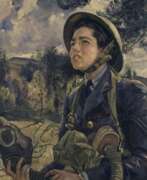

Dame Laura Knight was an English artist who worked in oils, watercolours, etching, engraving and drypoint. Knight was a painter in the figurative, realist tradition, who embraced English Impressionism. In her long career, Knight was among the most successful and popular painters in Britain. Her success in the male-dominated British art establishment paved the way for greater status and recognition for women artists.
In 1929 she was created a Dame, and in 1936 became the second woman elected to full membership of the Royal Academy. Her large retrospective exhibition at the Royal Academy in 1965 was the first for a woman. Knight was known for painting amidst the world of the theatre and ballet in London, and for being a war artist during the Second World War. She was also greatly interested in, and inspired by, marginalised communities and individuals, including Romani people and circus performers.
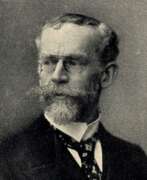

Karl Köpping was a German painter and engraver. He also designed objects of art made of twisted glass.
He mainly created etchings after the well-known works of the past centuries, especially by Rembrandt, but also Hals, Gainsborough or Munkácsy. He also designed Art Nouveau art objects made of coiled glass.
He was awarded the Order of the Legion of Honour and the First Class Medal of the Munich Art Exhibition, as well as the Grand Prix of the Paris World's Fair in 1889.


Leon Kroll was an American painter known for his landscapes, portraits, and figure paintings. He was born in New York City and studied at the Art Students League and the National Academy of Design.
Kroll's early works were influenced by the Ashcan School, which focused on depicting the grittiness of urban life. However, he eventually turned to painting landscapes and became known for his depictions of the Adirondack Mountains and the coast of Maine.
Kroll also produced a large number of portraits, including those of prominent figures such as President Franklin D. Roosevelt and Supreme Court Justice Felix Frankfurter.
Kroll was a member of several art organizations, including the National Academy of Design, the American Academy of Arts and Letters, and the American Watercolor Society. He received numerous awards during his career, including the National Academy of Design's Altman Prize in 1922.
Today, Kroll's works can be found in several museums and collections, including the Metropolitan Museum of Art, the Smithsonian American Art Museum, and the Museum of Fine Arts, Boston.


Maria Langer-Scheller is a German artist who started her artistic career with oil paintings, but later devoted herself to watercolors. She has worked as a graphic designer for Ffluge Blatter and the Merkur newspaper in Dachau, among other publications. In 1914, in Leipzig, she was exhibited at an exhibition of book graphics. She illustrated children's books for the Cassirer publishing house in Berlin. In addition, she created works as an independent artist. Her favorite technique was watercolor. Maria Langer-Scheller has been a member of various artists' associations, including the German Artists' Association, the Munich Artists' Association, the GEDOK and the Dachau Artists' Association. In 1919, she became one of the co-founders of the Dachau Artists' Group, which organized the first exhibition of artists in that city. In addition to her work as an artist, she wrote poems and stories, which she published in daily newspapers, often supplementing them with paper clippings and drawings.


Lotte Laserstein was a German-Swedish artist and a prominent representative of German realism.
Lotte was a student at the prestigious Berlin Academy of Fine Arts and became an accomplished realist painter, receiving a gold medal from the Academy for her work. Her first exhibition took place in 1930 at a Berlin gallery. Laserstein worked partly in figurative painting, had apprentices, and illustrated anatomy texts to earn money. She also painted portraits of cosmopolitan, emancipated women as well as self-portraits.
The National Socialist regime forced the artist to leave Germany in 1937 and emigrate to Sweden. Her mother died in a concentration camp. Lotte Laserstein lived in Stockholm until the end of her life, creating over five decades of work, in addition to expressive self-portraits, many moving images of other immigrants, rural landscapes and urban scenes in Sweden.
Lotte Laserstein became a member of the Swedish Academy of Fine Arts and earned a reputation as a popular and respected portraitist. She has approximately 10,000 works in her oeuvre.


Jean Laudy was a Dutch painter. In his early days he was mainly influenced by Impressionism. Laudy painted portraits, landscapes and still lifes. He made portraits of members of the Belgian monarchy, including King Albert I of Belgium, Queen Elisabeth and King Leopold III. His work has been exhibited in Venlo (1937) and Brussels (overview exhibition, 1949). He is the father of cartoonist Jacques Laudy whose best-known series is Hassan and Kaddoer.


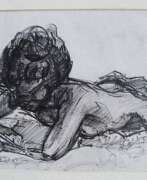

Johann Baptist Maier was a German commercial artist and painter. In 1905 he was a prize winner in a competition for advertising designs for joint advertising by the entrepreneurs Ludwig Stollwerck and Otto Henkell. Maier designed a number of covers for the magazine Die Dame and the 1922 book calendar. Maier worked in Munich from 1909 to 1942. He was a member of the second group The Six and the New Association of Munich Poster Artists. Johann Baptist Maier designed posters for the Marco Polo Tee, for the Kieler Herbstwoche, for the Fliege Blatter, Sporthaus Schuster Munich, among others. Between 1906 and 1925 he supplied almost 700 drawings for the Meggendorfer-Blätter.
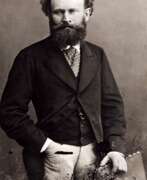

Édouard Manet, a French modernist painter born in 1832, was one of the pioneering artists of the 19th century who ventured into painting modern life, marking a significant transition from Realism to Impressionism. His notable works, such as "The Luncheon on the Grass" and "Olympia," both created in the early 1860s, were radical for their time and sparked controversy for their unconventional subject matter and depiction of modern life. These pieces, among others, have been recognized as milestones in the development of modern art.
Manet's background was one of privilege and connection, coming from an upper-class family with strong political ties. Despite expectations for him to pursue a career in law or the navy, Manet was drawn to painting from a young age, influenced by his uncle and the works of Old Masters like Diego Velázquez and Francisco José de Goya during his visits to the Louvre. His early rejection from the naval academy led him to fully commit to an art education under Thomas Couture, where he developed his unique style characterized by loose brush strokes and a focus on contemporary subjects over traditional historical, religious, or mythological themes.
Throughout his career, Manet's work was often met with criticism for its apparent disregard for traditional painting techniques and its bold choice of subject matter. Despite this, his exhibitions, including a self-organized one across from the Exposition Universelle in 1867, gradually gained the recognition and support of fellow artists and critics. His relationships with contemporaries like Émile Zola, Edgar Degas, and Claude Monet were crucial in his development and in establishing his legacy as a forerunner to the Impressionist movement, despite never formally joining their exhibitions.
Manet's influence on modern art cannot be overstated. His works are housed in prestigious museums worldwide, including the Musée d'Orsay in Paris, which holds "The Luncheon on the Grass," a testament to his enduring impact on the art world. Manet's ability to capture the essence of modern life, combined with his innovative techniques, positioned him as a central figure in the transition towards modern artistic expressions.
For collectors and experts in art and antiques, Manet's work represents not just the innovation of the 19th century but also the enduring appeal of an artist who dared to challenge the status quo. His paintings are not just artifacts of their time but also serve as a bridge between traditional and modern art, offering insight into the evolution of artistic expression.
To stay informed about new product sales, auction events, and updates related to Édouard Manet, signing up for updates can be a valuable resource for enthusiasts looking to deepen their understanding of this pivotal artist's contributions to the world of art.
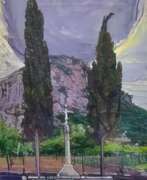

François Maret, also known as Frans van Ermengem or Frans Ermengem, was a Belgian poet, painter and art critic. He was recognized for his role as an editor at the Tribune dramatique and his unwavering support for General Franco during the Spanish Civil War.
Maret translated Dutch art criticism works and authored poetry volumes, often illustrating them under a pseudonym. Additionally, he created new illustrations for books by Charles Baudelaire and Charles van Lerberghe.


Oskar Martin-Amorbach was a German painter. After completing his studies and getting married, Martin-Amorbach moved to Samerberg in Chiemgau, where he became the youngest member of the artists' association "Die Welle". He became more public through his fresco in the Munich Glass Palace. In 1937 he joined the NSDAP. On July 16, 1939 he was awarded the title of professor in Munich. In 1943 he was appointed professor of history painting at the Berlin Academy of Fine Arts. The style of painting and the selection of motifs in Martin-Amorbach's works were predestined to be appropriated by National Socialist art policy. Rural and rural motifs and depictions of war were themes that were of particular importance for Nazi ideology. The peasant genre, presented in the style of the new objectivity in the wake of Wilhelm Leibl and Franz von Defregger, was intended to depict the peasantry as the "source of blood and life" and the backbone of the "German people's power" and the " national attitude". The images The Sower and The Harvest met these ideological guidelines perfectly. Martin-Amorbach also contributed to the war themes with, among other things, the picture You Drive Death. His popularity in the Third Reich put a strain on his further artistic work after 1945. In 1950 Bishop Julius Döpfner commissioned him to revise and supplement the frescoes in the Neumünster Church in Würzburg, which had been severely damaged by the bombing raid on Würzburg. Martin-Amorbach carried out this work in 1950/51.


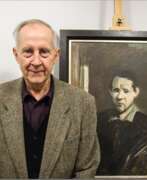

Harald Metzkes is a German painter and graphic artist.
In 1976 he won the Käthe Kollwitz Prize from the Arts Academy of East Germany and state-level official recognition in the form of the Banner of Labor. The next year his work was the focus of an exhibition at the National Gallery in (East) Berlin, "Harald Metzkes – Two decades of Pictures". 1976 was also the year in which he was a recipient of the National Prize of East Germany for illustrations and graphic art. In 1984 and 1988 Metzkes participated in the Venice Biennale.
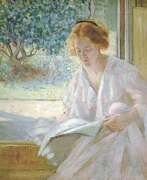

Richard E. Miller was an American Impressionist painter and a member of the Giverny Colony of American Impressionists. Miller was primarily a figurative painter, known for his paintings of women posing languidly in interiors or outdoor settings. Miller grew up in St. Louis, studied in Paris, and then settled in Giverny. Upon his return to America, he settled briefly in Pasadena, California and then in the art colony of Provincetown, Massachusetts, where he remained for the rest of his life. Miller was a member of the National Academy of Design in New York and an award-winning painter in his era, honored in both France and Italy, and a winner of France's Legion of Honor. Over the past several decades, he has been the subject of a retrospective exhibition and his work has been reproduced extensively in exhibition catalogs and featured in a number of books on American Impressionism.
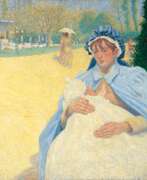

George Morren or Georges Morren was a Belgian painter, sculptor, Impressionist and engraver. The painter and friend of the family Emile Claus who taught him and his brothers several times a week served as his first mentor. He began working in an Impressionist style. In the summer of 1892, eschewing the shortened painting process which was associated with Neo-Impressionism, he began to work in a more spontaneous manner, creating more space for emotions. He became one of the most eager admirers of the French Impressionists. After three years in Paris he returned to Antwerp where he participated in several avant-garde groups. Morren created light-flooded paintings, exhibited at the fairs La Libre Esthétique in Brussels, the 'Vie et Lumière', and at numerous international exhibitions. Towards 1913, he entered a new creative period. The colors in his new works were more subdued. He used grated rough pigment and pastels. Morren remained faithful to impressionist ideals and did not participate in new trends, such as Cubism or Expressionism. He dealt with the scenes of everyday life, interiors, still lifes, landscapes and portraits. His palette became darker and his paintings developed a solemnity and clarity of expression.
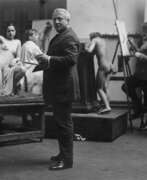

Richard Müller was a German painter and graphic artist. His artistic talent was evident early on. In 1893 he became self-employed as a painter in Dresden. In the fall of 1894, Müller exhibited landscape and animal studies for the first time in the Ernst Arnold Art Salon. In 1895 he met Max Klinger, who encouraged him to study etching techniques. In 1896 he was represented by Arnold at the exhibition "Hand Drawings of German Artists" and won the Grand Rome Prize of the Prussian Academy of Arts, endowed with 6000 gold marks, for his etching "Adam and Eve". In 1900 he received a professorship at the academy, meanwhile as well known in Dresden as Klinger. Müller was highly valued as a painter during the National Socialist era.
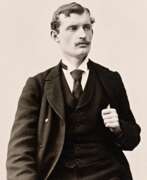

Edvard Munch, a renowned Norwegian painter and graphic artist, left an indelible mark on the world of art with his emotionally charged and symbolically rich compositions. Born on December 12, 1863, in Løten, Norway, Munch's work is emblematic of the Expressionist and Symbolist movements, through which he explored complex themes of life, death, fear, love, and anxiety. His most famous painting, "The Scream," conceived during a walk at sunset when Munch experienced an intense emotional episode, has become a universal symbol of human anxiety and existential dread.
Munch's upbringing was marred by illness, bereavement, and the fear of inheriting mental illness, themes that deeply influenced his artistic expression. This personal turmoil, coupled with his encounters with the works of Paul Gauguin, Vincent van Gogh, and Henri de Toulouse-Lautrec in Paris, and his association with the radical intellectual circle in Kristiania (now Oslo), propelled Munch to depict his own psychological and emotional states through his art. These experiences culminated in "The Frieze of Life," a series of works exploring the depths of human emotion and experience.
Throughout his career, Munch's art was met with both controversy and acclaim. His early works, characterized by their bold use of color and innovative exploration of psychological themes, sparked debate and scandal, particularly in Berlin where his first solo exhibition was closed prematurely. However, this controversy only served to increase Munch's fame and influence, particularly within the German Expressionist movement.
Later in life, after a nervous breakdown in 1908, Munch's style evolved towards a brighter palette and more optimistic themes, reflecting his recovery and a newfound interest in portraying the Norwegian landscape and rural life. Despite the challenges he faced, including the Nazi occupation of Norway during which many of his works were deemed "degenerate," Munch's legacy as a pioneer of Expressionism remained unshaken. He died on January 23, 1944, leaving behind a body of work that continues to resonate with audiences for its profound emotional depth and raw, unfiltered exploration of the human condition.
For collectors and art and antiques experts, Munch's works not only represent significant artistic achievements but also embody the tumultuous journey of an artist who used his canvas to navigate and make sense of the complexities of human emotion and existence. His paintings, many of which are displayed in museums and galleries around the world, continue to captivate and inspire.
To stay informed on new sales, auction events, and exhibitions related to Edvard Munch, sign up for updates. This subscription is a valuable resource for those keen on expanding their collection and knowledge of one of the most influential figures in modern art.
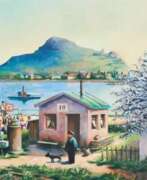

Otto Nückel was a German painter, graphic designer, illustrator and cartoonist. He is best known as one of the 20th century's pioneer wordless novelists, along with Frans Masereel and Lynd Ward. He developed his skill in drawing and painting, joining the artists' association, the Munich Sezession, and developing an interest in relief printing. Because of the scarcity of wood, Nückel made engravings for relief prints on lead plates. A pioneer in lead engraving, Nückel developed an accomplished mastery of this medium, distinguished by ample use of the multiple-line tool. Much of Nückel's work favors dark comedy, profound irony and an often scathing sarcasm.
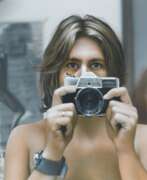

Jerry Duane Ott is an American artist. He is best known for his photorealism work and creative use of painting surfaces, he was a leading painter in the photo realist school of painting that emerged in the 1960s. Jerry Ott is also a true master airbrush artist. In the early 1970s JOtt received a great deal of attention in his career as the one of dealing exclusively with the nude figure. One of his latest technical development are paintings wrapped across two- and three-dimensional surfaces. They range from drawings a few inches wide to sculptural assemblages more than five feet tall and eight feet long. Ott's work has found international acclaim. His realistic paintings appear in the art capitals of Europe, Japan and as far a field as New Zealand.


Wolf Panizza was a German painter. Between 1919 and 1924 he studied drawing at the Academy of Fine Arts in Munich with Hermann Groeber and Franz von Stuck. In 1929 he co-founded the group of painters "Die Juryfreie", to which Günther Graßmann also belonged. At the time of the "Third Reich" his art was judged inconsistently. In 1936 he exhibited several works at the propaganda show "The Streets of Adolf Hitler in Art" and in 1937 he was represented with a monumental painting in the German Pavilion at the Paris World Exhibition, for which he received a gold medal. At the same time, two of his works were removed from the Bavarian State Painting Collections and the Nuremberg Municipal Gallery as "degenerate" and destroyed.


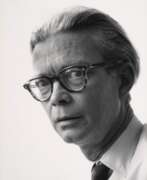

Robert Pudlich was a German graphic artist, painter, illustrator and set designer of the lost generation. His art was influenced by the New Objectivity. Pudlich belonged to the environment of the art dealer Johanna Ey. He was a member of the Rhenish Secession and the German Association of Artists. In 1936 he took part in the Nazi exhibition West Front in Essen. In 1937 his works were classified as degenerate art. After the Second World War, from 1947 Pudlich designed sets and costumes for productions by Gustaf Gründgens in Düsseldorf and Hamburg as well as for the Municipal Opera in Berlin. During this time he created a series of monumental murals, for example for the Düsseldorf Opera House. In 1955 he accepted a professorship at the Düsseldorf Art Academy.
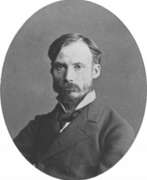

Pierre-Auguste Renoir was a French artist, celebrated as a pivotal figure in the development of the Impressionist movement. Born in Limoges, France, in 1841, Renoir's early experiences in Paris and his apprenticeship as a porcelain painter laid the foundation for his illustrious career in art. His transition to painting was marked by an early fascination with the play of light and color, which became a hallmark of his work. Renoir's paintings are renowned for their vibrant light and saturated color, often focusing on people in intimate and candid compositions. This focus on beauty and a particular affinity for capturing the sensuality of the female form distinguished his work from his contemporaries.
Renoir's contributions to Impressionism were significant, characterized by his use of bright colors and a technique that captured the movement and luminosity of the scene. His evolution as an artist saw him experimenting with a more linear and classical style, especially after his travels to Italy, where he was deeply influenced by the Renaissance masters. Despite facing personal challenges, including severe rheumatoid arthritis in his later years, Renoir's passion for painting never waned. His determination saw him adapting his painting technique to his physical limitations, ensuring that his creative output remained prolific until his death in 1919.
Among Renoir's notable works are "Bal du moulin de la Galette" (1876), "Luncheon of the Boating Party" (1880), and "Girls at the Piano" (1892). These masterpieces exemplify the essence of Impressionist art with their depiction of light, movement, and everyday life. Renoir's works are housed in prestigious museums around the world, serving as a testament to his enduring legacy in the realm of art.
For art collectors and experts, Renoir's oeuvre represents an essential segment of the Impressionist movement, offering insights into the evolution of modern art. His mastery in portraying the beauty of the moment and the depth of human emotion continues to captivate and inspire audiences worldwide.
If you are passionate about collecting or studying the works of Pierre-Auguste Renoir, we invite you to sign up for updates on new product sales and auction events related to this iconic artist. Stay informed about the opportunity to own a piece of art history and deepen your appreciation for the rich tapestry of culture and art that Renoir helped weave.


Johanna Elisabeth Repelius, known as Betsy, was a Dutch painter and watercolorist who specialized in simple, one-figure, genre scenes. From 1873 to 1876, she was enrolled at the Rijksakademie, where her primary instructor was August Allebé. She also studied watercolor painting with Nicolaas van der Waay, who also became close friend. In 1875, she became a member of Arti et Amicitiae and, after 1878, was a regular participant in their exhibitions.
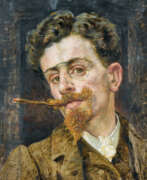

Carlo Pietro Sigismund Righini was a Swiss painter and art association executive.
Free from pressing financial obligations, he devoted himself entirely to his work. In 1898, he moved into a new studio, built by his father, where he produced still-lifes, portraits and nudes. He also worked in plein aire for a time, when he was flirting with impressionism. Later, he travelled extensively, visiting the Low Countries in 1903 and England in 1910. In 1904, he began to experiment with brighter patches of color; perhaps influenced by Cézanne and the Fauvists or his friends Giovanni Giacometti and Cuno Amiet. He showed his work at numerous exhibitions until around 1920, when he stopped painting to focus on his membership and executive positions in numerous art associations.
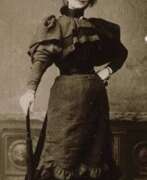

Juana Romani, née Carolina Carlesimo, is a French portrait painter of Italian origin.
As a young girl in Paris, where her family moved from Italy, she posed for sculptures and paintings, then decided to paint herself and changed her name. Contemporaries appreciated Romani as a master of women's portraits specifically, as she depicted women in historical costumes, mysterious and fabulous.
One of Romani's portraits was awarded a silver medal at the World's Fair (1889).


